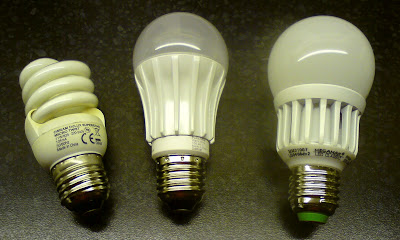I bought a used Merida Cruise bicycle and converted it to an electric bicycle with the Magic Pie 3 from Goldenmotor. This is how I did it and a test of the finished ebike.
 |
| My initial picture after assembling the Magic Pie 3 and performing my first test run. |
I try to bike to work using my regular bike as often as possible, and then showering when getting there. But some days I have to meet customers, with no option to shower. Then there is also the case when I wake up and just do not feel like pedaling at all. In both these cases I often end up taking the car. My goal now is to keep the car parked, and enjoy life with this amazing ebike.
Since we have many hills in Norway I wanted the bike to have a powerful motor. I found the 1000W 48V MagicPie 3 (MP3) from
GoldenMotor in China. I like the simplicity of the front wheel motor, but decided to go for the rear wheel motor. It gives a better grip and perhaps better handling. I also liked the idea that the controller was integrated in the hub motor. The performance can be tuned by connecting the MP3 to a PC with a special USB cable. A legal limited power motor or a full power bike? You decide by programming.
After about two weeks I got the delivery. There are some special bike tools needed to take off the 6 gear cassette so I went to the local bike shop and got some assistance.
 |
| Cassette before adding washer |
 |
| Cassette with needed washer |
MPIII can be used with most 3 to 6 gear bikes. Mine is 6. Take the cassette off the old rear wheel and move it to the MPIII rear wheel. First we forgot the washer and ended up with a cassette that did not free wheel. It was not easy to get off again! So make sure you remember to add a washer that will make the cassette free wheel.
 |
| Mounting the washer , then the cassette |
After this I fitted the rear wheel with the motor to my bike and tightened the nuts on each side firmly.The first week I used a twist throttle for adjusting the power to the motor. I did not like it much as I found it too easy to twist. It was also tricky to avoid twisting while breaking. So I changed to a thumb throttle that I like much better.

So on the right side I now have the thumb throttle. It moves nicely with my thumb. I also have the rear hand break from Goldenmotor which includes a switch that detects when breaking. This signals to the controller inside the MPIII to cut off the motor and activate the regen breaking. The factory setting in my controller was set to 50% regen which gives a good portion of extra breaking power. I have adjusted this to 15% to minimize the risk of slipping. The hand break also activates the original mechanical rear breaks of the bike.

I moved my gear shift from right to left side. That is why the numbers are upside down, but it works just fine. I also decided to not install the hand break with regen breaking on this side. I have kept the original front wheel hand break here, then I can use this for very light breaking with out the powerful regen breaking cutting in. The red button is cruise control. Use the thumb throttle to achieve desired speed, then hit the red button to maintain that speed. Power to the motor is cut off when hitting the red button again or when breaking with my rear hand break.
The power connector to the battery broke when I was on my first bike trip in March 2013. I fell on my bike when making a turn. I was just barely moving, but the black power connector broke when the bike hit the road. This was at +2C, so it was rather cold. The plastic housing just broke up in many pieces. Seems to be a cold weather problem with this. I replaced it with a original Anderson housing SB50 P/N 992G2-BK. It can be bought several
places, such as
www.mouser.com where it has P/N:
879-992G2-BK
The + and - metal pins
from Golden Motor snaps right in to this housing, so it is easy to replace. No
resoldering required. If you do cold weather biking it might be good to get a spare now.
Twice I had a flat before understanding the problem. The last time it was obvious. The pressure of the tire was a bit low and when breaking hard the tire and inner tube must have moved slightly. Inside the rim there was a very sharp aluminum edge that corresponded to the razor sharp cut in the inner tube. In the picture to the left I have sanded it down. Please check for this before putting your tire on the Golden Motor rim.
The performance of the MPIII can be adjusted by connecting a USB cable to a PC and running the free PD-280 software. This is the setting I got when pushing the "factory setting" and then "get config".
 |
| Factory setting on my MPIII rear wheel motor controller. |



















